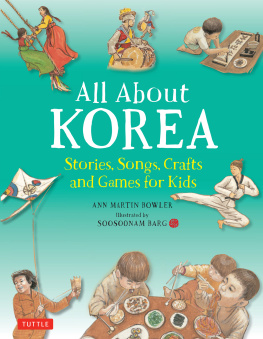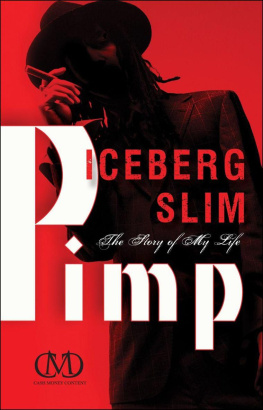EASY WAYS TO PIMP YOUR FOOD
by Suzy Bowler
Copyright 2014 Suzy Bowler
All Rights Reserved
~ Table of Contents ~
Whether you are a brilliant chef, a good home cook or prone to buying in ready-made here are loads of cunning ruses which can make your food more attractive (and therefore some would say easier to digest), more impressive, more delicious and generally more enjoyable.
~ Nifty Ideas ~
~ Very often food looks absolutely great on a plain white plate but black can be brilliant too, especially for very vibrant colours. Alternatively (and cheaply) collect various pretty plates from charity shops etc. and match the plate to the dish or the mood. Or ...
~ Serve on something other than a plate! Slate, wood, glass or even a large clean non-toxic leaf etc. as appropriate.
~ Think about colour if youre serving a white fish with mashed potato and a creamy sauce youd better make sure to have some brightly coloured veggies, salad or garnish on the plate to brighten things up.
~ A bit of height is a good thing; pile the food up a little, put the fish on top of the mash and/or some on top of the fish.
~ Put the sauce under the meal rather than pour it on top, not only does it look more attractive but it also means that crispy things stay crispy.
~ Dont just spoon rice onto the plate; lightly press it into a cup or other shaped mould and then turn it out. Even better put a herb leaf, a curl of red pepper, a thin slice of lemon or similar in the cup first so that it is on top of the rice when turned out!
~ Make a pretty pattern round the edge of a pie crust. I have heard (possibly an urban legend) of people using their false teeth for this but snipping the edge or imprinting with a fork or shells or anything suitable you have to hand can make a nice impression (pun intended).
~ Cut bread on the diagonal it looks way more appealing for no effort whatsoever.
~ For some reason odd numbers are more attractive than even numbers so five slices of meat, say, will not only look better than four but better than six too! (Mind you six might taste better!)
~ If something is cooked but not quite as golden as you'd like - run a blow torch over it. Probably best to use a specific kitchen blow torch but a big manly thing will do too as long as you are careful.
~ When making cheese straws or other pastry nibbles do the final roll on panko crumbs instead of flour for a crisp and crunchy finish.
~ Garnishes ~
This is probably the largest section of the book but dont worry Im not going to be waxing lyrical about tomato roses or butter sculptures.
Two important points before we start.
1. In almost all cases it is best to add the garnish to a dish immediately before serving but if I think of an instance where this doesnt apply Ill mention it.
2. It might seem obvious but do make sure the garnish compliments the dish; as lovely as a vibrant sprig of parsley may look it is rarely suitable, for instance, on a chocolate mousse.
Herbs
According to their nature and the dish to be garnished herbs can be used as fronds, scattered leaves, little bunches, sprigs, chopped and sprinkled, chiffonade (finely cut shreds) or even fried.
How to prepare herbs
~ Make sure the herbs are clean and dry.
~ Use a large sharp knife, gather the herbs together on the chopping board and with the tip of the knife on the board use a rocking motion to chop the herbs with the heel of the knife. Change the angle to chop more finely.
~ In some cases a sharp pair of scissors works well and a trick to this is put the stripped herb leaves into a deep bowl or measuring jug and snip at them.
~ Chiffonade this is just fine shreds, especially useful for larger leaves such as basil or sage. It is quicker if you pile up a few of the leaves and slice them all together or with big leaves roll them up before slicing.
Which herb with what?
Chopping or slicing herbs not only makes them useful for garnishing but also releases their tasty essential oils, heating them has the same effect, so choose carefully.
~ Parsley works on almost anything savoury but particularly goo with seafood, especially with a little lemon too.
~ Basil - famously great with tomatoes, also good with seafood, chicken and cheese.
~ Coriander (aka Cilantro) works well with spicy dishes, Indian and Mexican for instance.
~ Sage for porky items and squash (butternut, not orange!).
~ Rosemary a classic with lamb and also good on roast potatoes.
~ Oregano used a lot in Italian and Mexican food and tomato dishes in general.
~ Marjoram good with meats, great with lamb.
~ Thyme sprinkle the little leaves on meat dishes.
~ Chives a whole chive leaves placed artistically look good just as they are, their mild onion taste compliments all sorts of things but particularly eggs.
~ Mint new potatoes, of course, some Indian dishes, yogurt sauces and fruit salad.
~ Dill garnish fish dishes with fronds or chopped dill, also good with summery vegetables.
~ Fennel perfect with fish,
~ Tarragon excellent with chicken and the leaves just need to be removed from the sprig an sprinkled.
Flowers
The flowers of many herbs are edible and can make a dish look stunning, especially the blue ones!
~ Chive flowers these taste as one would expect; mildly oniony. Whilst the whole flower is very pretty for eating purposes it is better to pull the flower apart, gently, and sprinkle your dish with the petals.
~ Borage beautiful with a light cucumber flavour these are great added to salads, sprinkled on cucumber friendly foods such as, say, cucumber and also make a pretty garnish for Pimms.
~ Wild garlic I love this stuff which grows wild all over the place in April and early May, depending where you live. The leaves are useful in all sorts of ways which you can read more about here . The flowers are very pretty and entirely edible.
~ Lavender has a wonderful colour and a somewhat perfumey flavour which goes well with honey, summer berries and the sort of dishes that are served in Provence!
~ When adding rosemary to a dish why not add a few of the flowers too, they taste like rosemary!
~ Nasturtiums the leaves are edible too. The flavour is peppery and smaller just-opened flowers make the best eating.
Fruit
~ Of course most fruits are bright, beautiful and gorgeous with no help whatsoever; for instance a slice of star fruit or kiwi fruit, a perfect strawberry, a fragile physalis or a cluster of redcurrants.
~ Try scattering pomegranate seeds on rice; looks good and adds great texture and flavour contrast.
~ If you use cut fruit brush the cut surfaces with a little lemon juice to stop it turning brown.







![Willis - Beer: a cookbook: good food made better with beer: [recipes]](/uploads/posts/book/224368/thumbs/willis-beer-a-cookbook-good-food-made-better.jpg)







